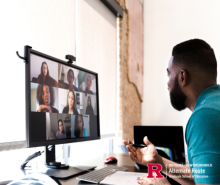How Classroom Predictability & Student Trust Enhance Student Learning
"We all possess a curiosity to learn. That is the essence of who we are as natural learners."
Though it may not be readily apparent to us as educators, our students begin each school day with a natural desire to learn something new, or dig deeper into something they already know. As teachers, we can reinforce and focus our students’ love of learning in the classroom using principles at the heart of chaos, postmodern and change theories. Each theory posits that every student is a uniquely wired individual, subject to influencers—other students, school staff, parents—and therefore subject to change. Education Change theory emphasizes human interdependency and explains how we change in relation to one another. Chaos theory recognizes our need to learn by acknowledging our inherent lack of linearity. Postmodern Theory states that our knowledge is socially constructed, changing over time from one context to another. In short, these theories establish that students naturally crave opportunities to learn with and from others; and consequently, open themselves to change.
Teachers must be prepared to manage the inevitable change that comes from student learning and to create the conditions in which change can occur. As we know, change—as is the case for many adults no less students—complicates perspective and upends stability. For this reason educators must first establish trust in order to enable such change. Students have to trust that our classrooms are safe spaces to learn and endure the change process. Our students have to know that it is ok to grow, explore, make mistakes and change their minds in our classrooms and schools. To that end, how can change theories support teachers in designing learning environments rooted in trust?
One way to establish trust as students make themselves vulnerable to change is through the use of predictability. When students can confidently predict classroom structure and teacher behavior, they are free to immerse themselves in their curiosities, freely take risks and safely negotiate their social interactions. Routines and procedures help make classrooms more predictable and, subsequently, help students feel safe.
Aspiring teachers in the Rutgers Alternate Route Teacher Training Program recently explored the importance of routines and procedures and shared their insights below.
Communicate what to expect
“Students need to know what they can expect from you and what is expected of them when they're in your classroom, and these expectations should be established from day one. Suddenly changing the way you teach, how you grade, etc. could make your students feel like they're in a totally different class in the middle of the school year and that could have a negative impact on their performance. For example, if you suddenly start giving weekly quizzes halfway through the year, there could be some busy students who would have to change their schedules to account for additional study time, and risk falling behind in other subject areas. Whereas if you had been giving weekly quizzes from the start, the students would be used to the additional study time and could better build their schedules around it. Setting routines and procedures early on gives students a sense of consistency and helps them feel more comfortable while learning in your class.”
--Andrew S., NJ Teaching Candidate
Maximize learning time
“No one likes to feel their time is being wasted. It’s one of the several reasons that routines are critically important to student learning,. They free students from uncertainty and teachers from unnecessary clarification of each day’s activities. Students know what to expect and are prepared to get right down to learning. Teachers do not need to give daily procedural instructions and can likewise get right down to business. ”
--Kelly G., NJ Teaching Candidate
Foster self-regulation
“Routines and procedures can help prevent discipline problems. Students know where they need to be and what is expected of them. This prevents a chaotic classroom where students are talking, getting out of their seats, or continually asking the teacher what they are supposed to be doing. By having routines and procedures in the classroom students can expect a safe, organized environment to work in, which will help them succeed.”
–Tracy F., NJ Teaching Candidate
--
Schools should fundamentally serve as meeting places for students, teachers, parents, and school leaders to learn and seek others from whom they can learn. As such, schools have to demonstrate to students that they are safe. Chaos, postmodern and education change theories provide the basis for this. Teachers that develop an awareness and understanding of these theories are able to design classrooms that empower student learning. Routines and procedures are just one design element that supports the student learning process.

 Dr. Renier Pierantoni is an Adjunct Professor of Rutgers University's Alternate Route Regional Training Center, a program offering 200 hours of formal instruction to alternate route provisional teachers seeking standard certificates for elementary (K-5), ESL, N-12 subject area and careers in technology.
Dr. Renier Pierantoni is an Adjunct Professor of Rutgers University's Alternate Route Regional Training Center, a program offering 200 hours of formal instruction to alternate route provisional teachers seeking standard certificates for elementary (K-5), ESL, N-12 subject area and careers in technology.





